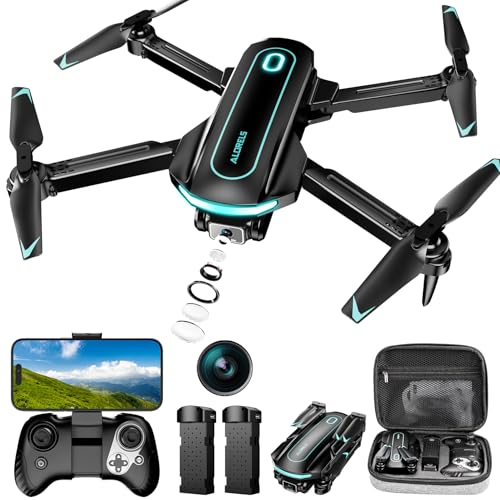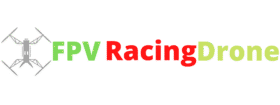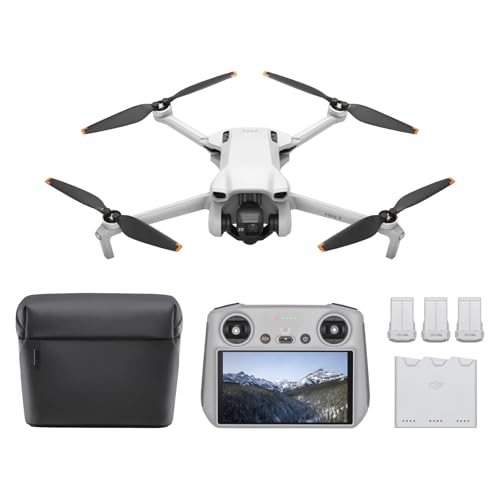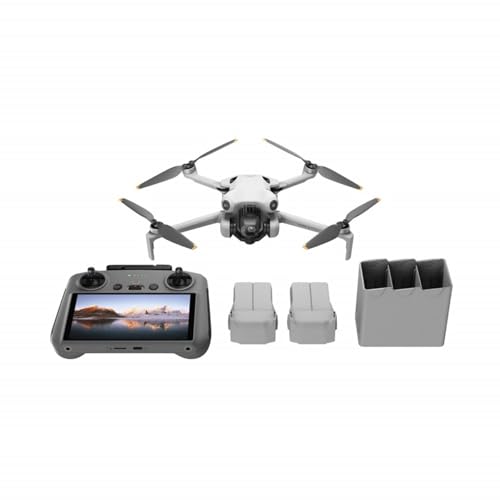Ever wished you had a personal cameraman floating in the sky, capturing all your adventures without you lifting a finger? Or maybe you just want a drone that can handle the tricky flying bits so you can focus on getting that perfect shot? Well, you’re in luck! Autonomous drones are here to make those dreams a reality, offering intelligent flight features that take the stress out of piloting.
Whether you’re a content creator, an outdoor enthusiast, or just someone who loves cool tech, finding the best drone for autonomous flight can revolutionize how you capture moments. These smart flying machines come packed with features like “Follow Me,” waypoint navigation, and automatic return-to-home, allowing for incredible aerial photography and videography with minimal effort.
But with so many options out there, how do you cut through the noise and pick the right one? Don’t sweat it! We’ve done the heavy lifting for you, exploring some of the top contenders. We’ll dive into their unique capabilities, what makes them tick, and who they’re best suited for. Let’s get flying!
What Makes a Drone “Autonomous”?
Before we jump into the reviews, let’s quickly clarify what we mean by autonomous flight. A drone with autonomous capabilities isn’t just about flying itself from point A to point B. It’s about its ability to perform intelligent tasks without constant manual input from the pilot. This often includes:
- Follow Me Mode: The drone tracks a subject (usually the controller or a person) and follows them, keeping them in the frame. Perfect for action shots!
- Waypoint Navigation: You can pre-set a flight path with multiple points, and the drone will fly it automatically.
- Orbit Mode (Point of Interest): The drone flies in a circle around a designated subject, keeping it centered.
- Return-to-Home (RTH): Automatically returns to its take-off point when the battery is low or signal is lost.
- Gesture Control: Some drones can be controlled with simple hand gestures.
These features make getting cinematic shots or simply hands-free video a breeze. Now, let’s explore the best drone for autonomous flight options available today!
Our Top Picks for Autonomous Drones
HOVERAir X1 Drone with Camera, Self-Flying Camera Drone

The HOVERAir X1 is a game-changer for anyone wanting a truly hands-free camera experience. This self-flying marvel is incredibly light and compact, making it an ideal companion for adventurers who want to capture their moments without the fuss of complex controls or even an FAA registration. Its intelligent follow-me camera capabilities and pre-programmed flight paths mean you can literally just toss it in the air, choose a mode, and let it do its thing, becoming your personal aerial videographer for all your active pursuits.
- Intelligent Follow-Me Camera: Tracks you at up to 15 mph, perfect for sports.
- Portability & Simplicity Redefined: Weighs only 125g, lighter than an iPhone, no FAA registration needed.
- Automatic & Intelligent Flight Paths: Pre-programmed modes like Hover, Follow, Zoom Out, Orbit, Bird’s Eye, and Manual Control.
- Amazing Image & HDR Video Shooting: Supports 2.7K@30fps and 1080P HDR video with triple stabilization.
- Live Monitoring & Manual Control: Control via the Hover X1 App for real-time previews.
- Privacy Shield with Internal Storage: 32GB internal storage, no SD card needed.
- Fully Enclosed with Safety Guards: Enhanced safety for close-range shooting.
Pros:
– Ultra-light and portable, making it easy to carry anywhere.
– No FAA registration required due to its weight.
– Truly hands-free operation with one-click palm takeoff and pre-programmed flight paths.
– Excellent for content creators on the go.
– Good video stabilization despite its small size.
Cons:
– Limited flight time per battery (around 11 minutes).
– Max video resolution is 2.7K, not 4K like some competitors.
– App interface for live preview might be low-resolution.
User Impressions: Users absolutely love the HOVERAir X1 for its sheer simplicity and portability. It’s often hailed as the perfect “grab and go” drone for quick shots, especially for solo adventurers or those who don’t want to deal with traditional drone complexities. The follow-me feature receives high praise for its effectiveness.
Drone with Camera, 1080P HD FPV Camera, One Key Take

This drone is a fantastic entry point for beginners and kids looking to dip their toes into the world of aerial photography and fun flights. With its user-friendly controls and smart modes, it offers a surprisingly engaging experience without being overly complicated. The 1080P HD camera with an adjustable lens means you can capture decent footage, and features like trajectory flight and 360° flips add a layer of excitement to learning how to fly. It’s a great option if you’re seeking a simple, enjoyable best drone for autonomous flight experience to start with.
- 1080P Camera Drone with Adjustable Lens: Tilts up to 90°, wider view. Optical flow for steady footage.
- Beginner-Friendly Drones with Easy Controls: One-key take-off/landing, headless mode, 3 speed levels.
- Fun FPV Drone with Smart Modes: Trajectory flight, circle fly, 360° flips, gravity sensing mode via “Bokigibi” app.
- Drone with 2 Batteries for Longer Flight: Up to 24 minutes total flight time.
- Lightweight & Foldable Design & Perfect Gift: Weighs 135g (no FAA registration), carrying case included.
Pros:
– Very easy for beginners and children to learn and operate.
– Smart flight modes like trajectory flight add a fun, semi-autonomous element.
– Good value with two batteries included for extended flight time.
– Portable and lightweight, making it travel-friendly.
Cons:
– Camera resolution is 1080P, not as high as more expensive models.
– Optical flow positioning is good but less precise than GPS.
– Limited advanced autonomous features compared to premium drones.
User Impressions: Parents often pick this drone as a first drone for kids, praising its durability and easy learning curve. The extended battery life from two packs is a big plus, and users enjoy the basic FPV experience. Some wish for higher camera quality, but acknowledge its price point.
GPS Drone with 4K Camera for Adults, FPV RC Quadcopter

For those who want higher quality imagery combined with reliable autonomous features, this GPS drone steps up to the plate. It boasts a 4K HD camera and, uniquely, a built-in 5-inch LCD screen on the remote control, eliminating the need for a smartphone. Its intelligent GPS flight ensures precision and safety, with features like auto Return-to-Home (RTH) and Follow Me, making it a strong contender for the best drone for autonomous flight in its category, especially for users who prefer a dedicated control experience.
- 4K HD Camera with Real-Time Viewing: 90° adjustable HD camera, live footage on a 5-inch LCD remote screen.
- Intelligent GPS Flight with Enhanced Safety: Precision flight, auto RTH (low battery/manual press), Circle Fly, Follow Me.
- 90-Minute Extended Flight with Stability: 3 high-capacity batteries, low-noise brushless motor, level-4 wind resistance.
- Ultra-Portable 238G Foldable Design: Lightweight, 2000ft control range, portable protective case.
- Beginner-Friendly Controls with One-Key Simplicity: 2 speed settings, one-key takeoff/landing/photo/video.
Pros:
– Dedicated LCD screen on the remote for real-time viewing – no phone needed.
– Reliable GPS features for safe and precise autonomous flight (RTH, Follow Me, Circle Fly).
– Impressive 90 minutes of total flight time with three included batteries.
– Lightweight and foldable, under 250g (no FAA registration usually).
– Strong wind resistance for stable shots.
Cons:
– Setup and calibration might require watching guide videos initially.
– The 4K camera quality might not match premium brands.
– Control range is 2000ft, which is good but not top-tier.
User Impressions: Customers appreciate the convenience of the integrated LCD screen and the reliability of the GPS features. The long flight time is frequently highlighted as a major benefit, allowing for extended exploration and filming. It’s seen as a solid choice for adult beginners wanting a step up in camera quality and stability.
Ruko F11PRO 2 Drone with 6K Camera for Adults, 3-Axis Gimbal

The Ruko F11PRO 2 is a serious contender for those seeking high-quality aerial footage paired with advanced autonomous capabilities. With a stunning 6K camera and a 3-axis brushless gimbal, your videos will be smooth and cinematic, even in windy conditions. But it’s the intelligent GPS flight modes – including Follow Me, Orbit Flight, Cruise Control, and Waypoint Planning – that truly make this drone shine as a contender for the best drone for autonomous flight. It simplifies complex shots, allowing even novices to capture professional-level content.
- Soar into Fall Memories: Crisp 6K photos and smooth 4K/30fps video.
- Advanced Image Sensor Lens: Captures finer details and richer textures.
- Stability Redefined: 3-axis brushless gimbal for superior stability and wind resistance.
- Extended Flight Time: Two batteries provide 70 minutes total flight time.
- Fly Smarter, Film Better: Intelligent GPS flight modes: Follow Me, Orbit Flight, Cruise Control, Waypoint Planning.
- Nighttime Adventures: Night Mode and frame retention technology for captivating night visuals.
- Super Long Range: 10,000-foot long-range transmission with stable digital connection.
Pros:
– Exceptional 6K photo and 4K video quality with a stable 3-axis gimbal.
– Comprehensive suite of intelligent GPS flight modes for creative and hands-free flying.
– Very long total flight time of 70 minutes.
– Impressive control range of 10,000 feet.
– Night Mode for unique low-light aerial photography.
Cons:
– Requires careful handling of the gimbal cover before startup to prevent damage.
– Higher price point compared to entry-level autonomous drones.
– Charging requires the specific Ruko charger for optimal performance.
User Impressions: Reviewers are consistently impressed by the Ruko F11PRO 2’s camera quality and the smoothness of its footage. The intelligent flight modes are highly praised for their accuracy and ease of use, making advanced shots accessible. The extended range and flight time are also frequently mentioned as standout features.
GPS Drones with Camera for Adults 1080P, 4.5″LCD Screen

Similar to another GPS model, this drone also offers the convenience of a built-in 4.5-inch LCD screen on the remote, meaning you don’t need to hog your phone for flying. It balances user-friendliness with solid autonomous capabilities like GPS auto-return, Follow Me mode, and Point-of-Interest flight. For those seeking a reliable and straightforward best drone for autonomous flight that prioritizes ease of use and safety, especially without requiring FAA registration due to its lightweight design, this K600 drone could be just what you’re looking for.
- 4.5″ LCD Big Screen: 5GHz real-time transmission, remote control for photo/video capture without a smartphone.
- 120°Wide-angle & 90°Electric Adjust: Includes 8GB SD card (supports up to 32GB), 1280*720 HD photos/videos directly on screen (up to 4K via smartphone app).
- GPS Auto-Return Drone: Auto return home, Follow Me mode, POI flight, circle flying.
- Quick Flight: No mobile phone connection needed, improved startup speed. GPS & Optical Flow for precise hovering.
- Beginner Drone & No Registration Needed: Portable handbag, foldable, under 250g (no FAA).
- Flight Performance: 2200 mAh UL-certified battery for 22 mins flight, brushless motor for stability and wind resistance.
Pros:
– Integrated LCD screen on the remote is a significant convenience.
– Comprehensive GPS features for safe and intelligent flight.
– Lightweight and foldable, avoiding FAA registration.
– Good flight stability thanks to GPS, optical flow, and brushless motors.
– Quick startup without needing phone connection.
Cons:
– Native screen resolution for photos/videos is 720p, though 4K is possible via smartphone.
– 22 minutes flight time is decent but not as long as some competitors.
– Might be a bit less feature-rich than higher-end models.
User Impressions: Users appreciate the K600 for its no-fuss operation and dedicated screen. The GPS features are considered accurate for a drone in its class, and the robust build quality receives positive remarks. It’s often recommended for beginners who want more advanced features than basic toy drones.
DJI Mini 3 Fly More Combo (DJI RC)

The DJI Mini 3, especially in its Fly More Combo with the DJI RC, is arguably one of the best choices if you’re serious about quality and intelligent flight in a compact package. DJI is renowned for its industry-leading drone technology, and the Mini 3 doesn’t disappoint. It offers stunning 4K HDR video, remarkable wind resistance, and incredibly intuitive autonomous features like GPS Return to Home and QuickShots. This drone combines professional-grade imaging with user-friendly operation, making it a powerful contender for the best drone for autonomous flight for almost any user.
- No Registration Needed: Under 249g (for recreational flight), avoids FAA registration.
- 4K UHD Stunning Imagery: Film in 4K HDR Video, Dual Native ISO Fusion for detail in highlights/shadows.
- Striking Vertical Videos are Ready to Share: True Vertical Shooting for social media.
- Extended Battery Life: Up to 51 minutes with Intelligent Flight Battery Plus (sold separately), Combo offers 114 mins total.
- 38kph (Level 5) Wind Resistant and 3-Axis Gimbal: Consistently smooth 4K imagery.
- 10km Max HD Video Transmission: Excellent anti-interference capabilities.
- Creative Features for Advanced Shots: QuickShots, Panorama.
- Beginner-Friendly and Safe: GPS RTH, Precise Hovering, Auto Takeoff/Landing.
- QuickTransfer via Wi-Fi: Fast download to phone without remote.
- Fly More Combo: Includes two extra batteries, charging hub, shoulder bag, and DJI RC with built-in 5.5-inch HD display.
Pros:
– Exceptional 4K HDR video quality with excellent stabilization.
– Industry-leading wind resistance and stable flight performance.
– Impressive 10km video transmission range.
– Comprehensive and reliable autonomous features like GPS RTH and QuickShots.
– The DJI RC with a built-in screen provides a premium, dedicated control experience.
– Lightweight and often exempt from FAA registration.
Cons:
– Higher price point, especially the Fly More Combo.
– Achieving maximum flight time requires an Intelligent Flight Battery Plus, which pushes it over 249g.
– While beginner-friendly, it has a deeper learning curve for mastering all features.
User Impressions: The DJI Mini 3 consistently receives rave reviews for its professional-level camera quality and ease of use. Users are particularly impressed with the stability and range, making it reliable for serious content creation. The DJI RC controller is a huge hit, simplifying the pre-flight setup.
Drone with Camera, Drones for Adults and Beginners, 1080P

This 1080P FPV drone is designed with beginners in mind, offering a blend of fun and functionality that makes learning to fly enjoyable. Its tiltable camera, optical flow positioning for stable hovers, and real-time image transmission allow for creative shots even for novice pilots. Autonomous features like trajectory flight and gravity control add an engaging dimension to the flying experience, making it a great, budget-friendly option for those looking for an easy-to-use best drone for autonomous flight for casual use or as a gift.
- FPV Drone with 1080P Camera: Tiltable camera (app, remote, manual), optical flow positioning, real-time HD images.
- Extended Flight Time: Two rechargeable batteries provide 24–28 minutes of flight.
- Beginner-Friendly: Over-current protection, emergency stop, trajectory flight, gravity control, 3D flip, headless mode, 3-speed, one-key takeoff/landing, gesture photo.
- Helpful Tips: Emphasizes gyroscope calibration for stable flight.
- Remote & App Control: Connect via “JY016FPV_XXXXXX” WiFi for app control (e.g., trajectory flight).
Pros:
– Very easy for beginners to pick up and fly, thanks to one-key operations and multiple speed modes.
– Good flight time with two included batteries.
– Optical flow helps with stable hovering indoors or in calm conditions.
– Fun smart features like trajectory flight and gesture photo.
– Affordable entry point into FPV and basic aerial photography.
Cons:
– 1080P camera resolution is average, not for professional use.
– Optical flow is less robust than GPS for outdoor stability.
– Autonomous features are more basic compared to GPS-enabled drones.
User Impressions: Users find this drone highly enjoyable for its ease of use and fun features. It’s often purchased for children or adults new to drones, and the multiple batteries are a consistent highlight. While not a professional camera drone, it delivers on its promise of an entertaining and beginner-friendly flight experience.
LAKSAKI GPS Drone with Camera for Adults 4K, Auto Return

The LAKSAKI EC120 combines the power of 4K UHD imagery with robust GPS-enabled autonomous flight, making it an excellent choice for adults who want clear visuals and intelligent flying. Its 5G FPV transmission ensures smooth, low-latency live streaming, while features like GPS Auto Return, Follow Me, Tap-Fly, and Circle Fly allow you to capture stunning footage like a pro without extensive manual piloting. This drone is designed for stability and extended range, positioning itself as a solid option for the best drone for autonomous flight for both convenience and quality.
- 4K UHD 5G FPV Camera: 3840 x 2160 resolution, 110° wide-angle, 90° adjustable lens, smooth 5G FPV transmission.
- GPS Auto Return: High-precision flying, RTH on button press, low battery, or signal loss.
- Next Level Fly Performance: 2 intelligent batteries for 50 mins flight, 1KM control range, brushless motor for wind resistance.
- Take Perfect Shots: Follow Me, Tap-Fly, Circle Fly functions for automatic, professional-like filming.
- Smart and Easy to Control: Optical Flow, Altitude Hold, Headless Mode, One-key Start, Speed Adjustment.
- Lightweight & No FAA Registration: Foldable design, under 250g.
Pros:
– High-resolution 4K camera with wide-angle and adjustable lens.
– Reliable GPS features for safe and versatile autonomous flight.
– Long total flight time of 50 minutes with two batteries.
– Good control range of 1KM and stable flight in windy conditions.
– Lightweight and foldable, avoiding FAA registration hassles.
Cons:
– “Tap-Fly” (Waypoint) might be less sophisticated than on premium models.
– While 4K, specific image sensor quality isn’t detailed, potentially not matching top-tier brands.
– App interface quality is a common point of variation for non-DJI drones.
User Impressions: Users frequently praise the LAKSAKI EC120 for its clear 4K camera and the effectiveness of its GPS return-to-home feature. The long battery life and stable flight performance are often highlighted, making it a good choice for outdoor enthusiasts. The various autonomous modes are generally found to be easy to use and helpful for capturing dynamic shots.
Key Considerations When Buying an Autonomous Drone
When you’re shopping for the best drone for autonomous flight, keep these points in mind:
- Camera Quality: Decide if 1080P, 2.7K, 4K, or even 6K is right for your needs. Consider gimbal stabilization for smooth footage.
- Battery Life: Longer flight times mean more fun and less charging. Look for models with multiple batteries or extended-life options.
- Autonomous Features: Check for specific modes like “Follow Me,” “Waypoint Navigation,” “Orbit,” and reliable “Return-to-Home.” GPS is crucial for many of these.
- Ease of Use: If you’re a beginner, look for one-key functions, headless mode, and clear instructions.
- Portability: Foldable designs and lighter weights are great for travel.
- FAA Registration: Drones weighing over 250 grams typically require FAA registration in the US. Many beginner-friendly autonomous drones are designed to stay under this limit.
- Control Range & Transmission: How far can it fly, and how clear is the live video feed?
FAQs About Autonomous Drones
Q1: What exactly is autonomous flight in a drone?
A1: Autonomous flight refers to a drone’s ability to fly itself and perform certain tasks without constant manual control from a pilot. This includes features like following a subject, flying pre-set routes (waypoints), orbiting a point of interest, and automatically returning to its take-off location.
Q2: Are autonomous drones harder to fly than regular drones?
A2: Not necessarily! In many ways, autonomous drones can be easier to fly, especially for beginners. Features like one-key takeoff/landing, GPS stabilization, and intelligent flight modes reduce the need for precise manual piloting, allowing you to focus on capturing great footage rather than constantly correcting the drone’s position.
Q3: Do all autonomous drones need FAA registration?
A3: In the United States, recreational drones weighing 250 grams (about 0.55 pounds) or more require FAA registration. Many smaller, entry-level autonomous drones are designed to be under this weight limit to exempt them from registration, making them very appealing for casual users. Always check the drone’s weight and local regulations.
Q4: What are “Follow Me” and “Waypoint” modes?
A4: “Follow Me” mode is an autonomous feature where the drone tracks a designated subject (often the controller or a person) and follows them, keeping them in the frame. “Waypoint” mode allows you to set a series of points on a map, and the drone will automatically fly that pre-programmed route, capturing footage along the way.
Q5: How long do autonomous drones typically fly on one charge?
A5: Flight times vary widely depending on the drone’s size, battery capacity, and the complexity of its features. Most consumer-grade autonomous drones offer flight times ranging from 10-30 minutes per battery. Many models come with multiple batteries or have options for extended-life batteries to prolong your flying sessions.
Q6: Can I still control an autonomous drone manually?
A6: Yes, absolutely! Even the most autonomous drones still offer full manual control. Autonomous features are designed to assist you, but you can always take over piloting the drone yourself, giving you ultimate flexibility and control over your flights.
Q7: Is obstacle avoidance important for autonomous drones?
A7: Obstacle avoidance is a highly valuable feature, especially for autonomous drones, as it helps prevent collisions when the drone is flying on its own. While not all drones have advanced obstacle avoidance systems, it’s a feature worth considering for peace of mind, especially if you plan to fly in environments with many potential obstructions.
Conclusion
Picking the best drone for autonomous flight really boils down to your priorities. Are you looking for ultimate portability and hands-free simplicity, like the HOVERAir X1? Or perhaps professional-grade 4K imagery and extensive intelligent flight modes, as offered by the DJI Mini 3 or Ruko F11PRO 2? Maybe a great balance of features and affordability, like the GPS drones with LCD screens, is more your style.
No matter your needs, the drones reviewed here demonstrate how far autonomous flight technology has come, making aerial photography and videography more accessible and exciting than ever before. So, go ahead, choose your smart flying companion, and get ready to capture your world from a whole new perspective!



